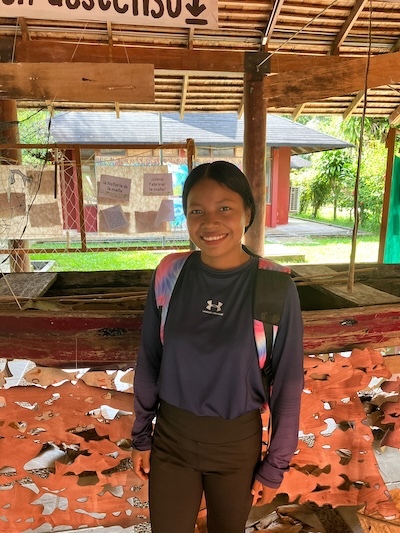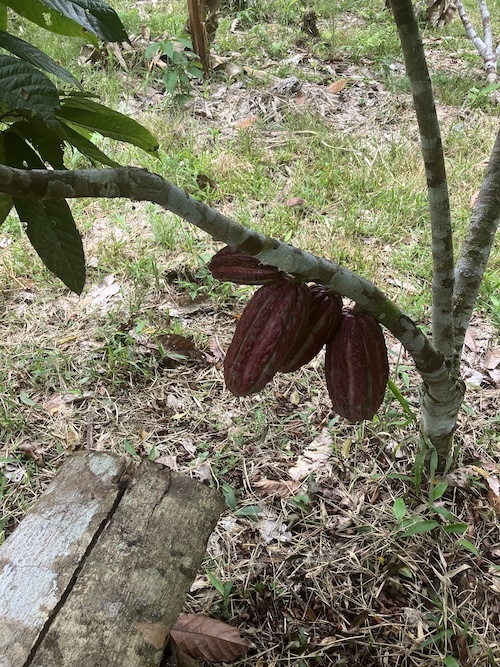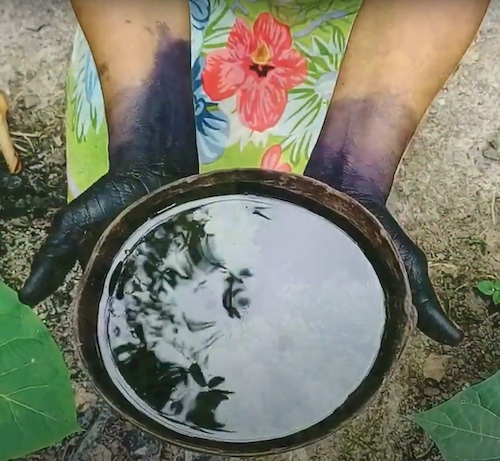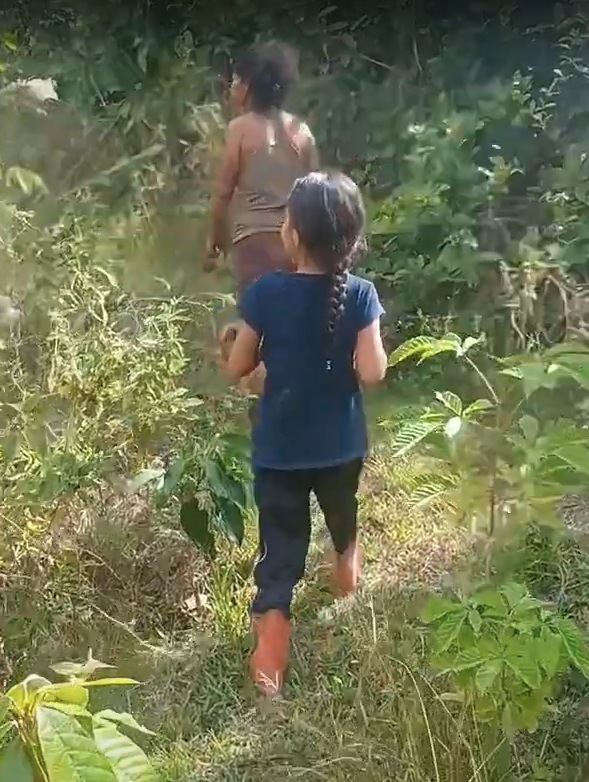acorn bread and açaí
May. 23rd, 2025 12:00 pmacorn bread
The leftover acorn meal I had in my fridge had gone moldy! Ah well. Fortunately I had acorns left over from last time, so I ground those up, leached them, dried them, and yesterday made a loaf of ... well it's mainly white bread--three cups white flour--but also a cup of acorn meal. So I am going to call it acorn bread, the same way you call a thing banana bread even though it's not mainly bananas.
Behold its majesty!

I still have leftover meal from this batch of acorns, but I will not make the same mistake twice by letting it linger. I intend to make acorn pancakes, or perhaps I'll use it to make some kind of meatballs or fish cakes.
Açaí
Or asaí, as they spell in in Colombia. We in America use the Brazilian (i.e., Portuguese) spelling. In Tikuna it's waira.
Açaí juice (wairachiim) is so beloved in the Amazon. And with reason--it's GREAT. Drink it sweetened, and with fariña, and it's a real pick-me-up:

The Açaí palms are very tall and very skinny. Traditionally, harvesting the berries involves a not-very-heavy person shimmying up the palm with a knife and cutting off the bunches of berries, as in the YouTube short below. (I say traditionally because in some parts of Brazil I think there are now large plantations, and they may have a mechanized way of doing this. But still--I gather--many many people do it the unmechanized way.)
The video specifies Brazil, but it'll be true anywhere that açai grows
My tutor's dad does this. Here's a picture not of her dad but of her boyfriend with a bunch of berries--gives a sense of how big they are:

And the process of making the juice is really labor intensive too. Here's my tutor's mom pounding it. You add water as you go along:

This year the river has really risen high, and in talking about it, my tutor said her dad had been able to go out in canoe and collect the asaí really easily. And I was thinking... wait... you mean the river's risen so high that he's up near the top of the trees? Is that what she's telling me?
I wasn't sure, so I did this picture in MS word (b/c I have no digital drawing tools) and sent it to her and asked, You mean like this?

And she said, "Yes, exactly."
Mind = blown.
The leftover acorn meal I had in my fridge had gone moldy! Ah well. Fortunately I had acorns left over from last time, so I ground those up, leached them, dried them, and yesterday made a loaf of ... well it's mainly white bread--three cups white flour--but also a cup of acorn meal. So I am going to call it acorn bread, the same way you call a thing banana bread even though it's not mainly bananas.
Behold its majesty!

I still have leftover meal from this batch of acorns, but I will not make the same mistake twice by letting it linger. I intend to make acorn pancakes, or perhaps I'll use it to make some kind of meatballs or fish cakes.
Açaí
Or asaí, as they spell in in Colombia. We in America use the Brazilian (i.e., Portuguese) spelling. In Tikuna it's waira.
Açaí juice (wairachiim) is so beloved in the Amazon. And with reason--it's GREAT. Drink it sweetened, and with fariña, and it's a real pick-me-up:

The Açaí palms are very tall and very skinny. Traditionally, harvesting the berries involves a not-very-heavy person shimmying up the palm with a knife and cutting off the bunches of berries, as in the YouTube short below. (I say traditionally because in some parts of Brazil I think there are now large plantations, and they may have a mechanized way of doing this. But still--I gather--many many people do it the unmechanized way.)
My tutor's dad does this. Here's a picture not of her dad but of her boyfriend with a bunch of berries--gives a sense of how big they are:

And the process of making the juice is really labor intensive too. Here's my tutor's mom pounding it. You add water as you go along:

This year the river has really risen high, and in talking about it, my tutor said her dad had been able to go out in canoe and collect the asaí really easily. And I was thinking... wait... you mean the river's risen so high that he's up near the top of the trees? Is that what she's telling me?
I wasn't sure, so I did this picture in MS word (b/c I have no digital drawing tools) and sent it to her and asked, You mean like this?

And she said, "Yes, exactly."
Mind = blown.


























